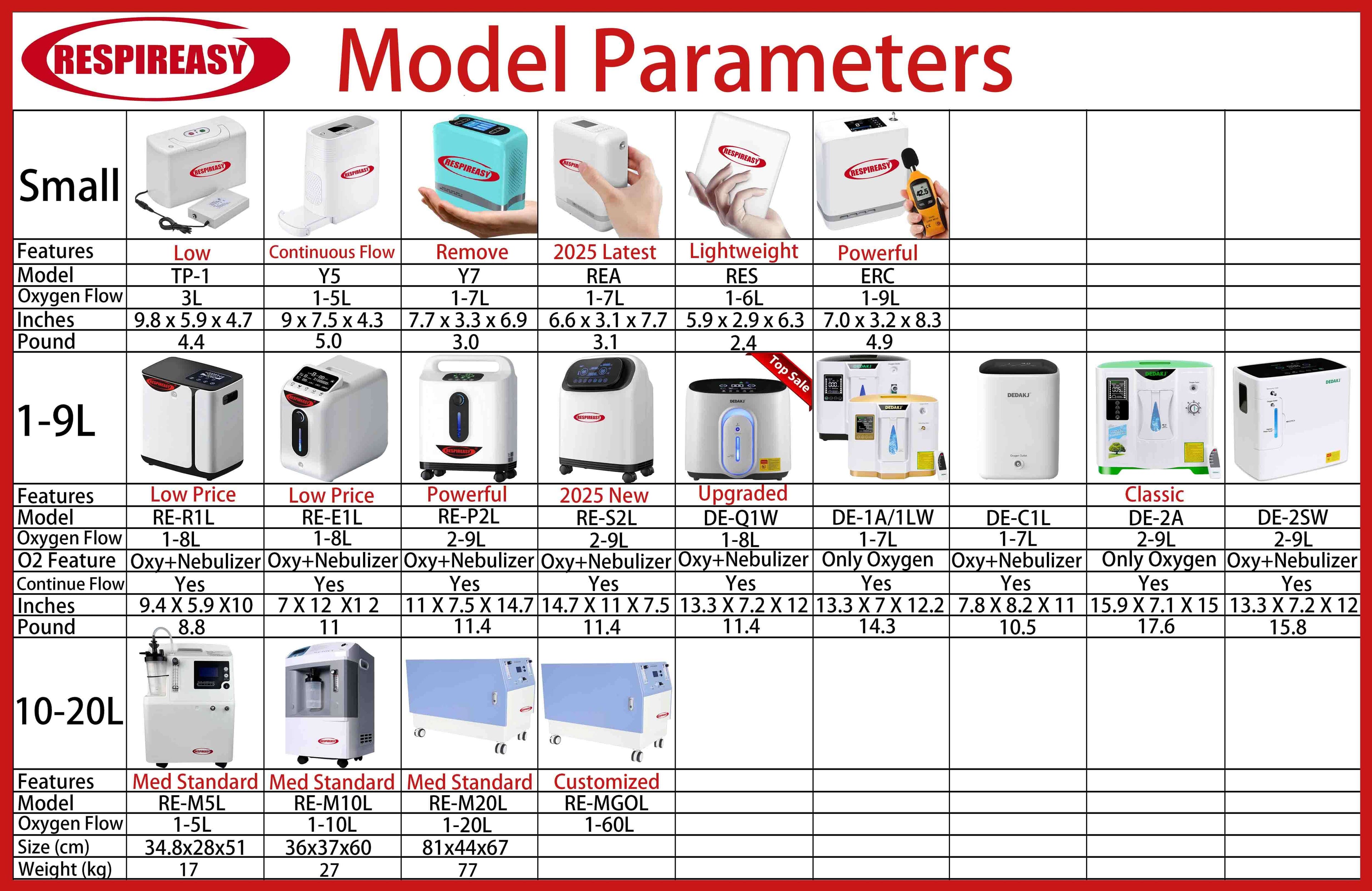RESPIREASY Oxygen Concentrator: Winter Life Tips from Doctors
Share
When the weather is cold, pre-existing respiratory diseases such as bronchial asthma, chronic obstructive pulmonary disease (COPD), and bronchiectasis are prone to worsening and flare-ups. Doctors offer the following advice:
I. Bronchial Asthma
Bronchoasthma, or simply asthma, is a common chronic respiratory disease, a chronic inflammatory disease of the airways involving various cells (such as eosinophils, mast cells, T lymphocytes, neutrophils, and airway epithelial cells) and cellular components. This chronic inflammation is associated with airway hyperresponsiveness, typically presenting as widespread and variable reversible airflow limitation, causing recurrent episodes of wheezing, shortness of breath, chest tightness, or coughing. These symptoms often occur and worsen at night and/or in the early morning, and most patients experience spontaneous remission or relief with treatment.
1. Respiratory Oxygen Therapy: Patients with mild symptoms who have access to home oxygen therapy should use it under the guidance of a doctor. 1. **Severe Asthma Patients:** Patients with severe asthma often experience hypoxemia and should be taken to a reputable hospital for oxygen therapy via nasal cannula or face mask as prescribed by a doctor. If an asthma attack is severe and unresponsive to general medication, or if the patient experiences altered mental status, the doctor should be notified immediately.
2. **Dietary Care:** A small percentage of adult patients and about half of children with asthma may experience flare-ups or worsening of their condition due to improper diet. A light, easily digestible diet rich in vitamins and sufficient calories is recommended. Avoid hard, cold, fried, and spicy foods such as pepper and ginger; avoid foods that trigger asthma attacks, such as fish, shrimp, crab, eggs, and milk. Adult patients with a history of smoking or alcohol consumption should abstain from these. If the patient does not have heart or kidney dysfunction, they should be encouraged to drink 2500-3000 ml of water daily to prevent bronchial obstruction by mucus plugs.
3. **Environment and Position:** Individuals with a known allergen should be removed from the allergenic environment as soon as possible. Provide a quiet, comfortable environment with suitable temperature and humidity; avoid placing flowers, carpets, and using fur, down, or silk fabrics indoors. 4. Oral and Skin Care: During an asthma attack, patients often sweat profusely. Wipe away sweat promptly. If possible, perform a warm water bath daily. Keep the patient warm, change clothes and bed sheets frequently, and keep the skin clean and dry. Assist and encourage the patient to cough and gargle after expectoration to maintain oral hygiene and prevent oral infections.
5. Positioning and Exercise: During an attack, adopt a sitting or semi-recumbent position. During non-attack periods, engage in active exercise, such as brisk walking or jogging, within your capabilities. Avoid strenuous exercise to improve lung function as much as possible.
6. Carry asthma medication with you at all times and learn simple emergency self-management methods during an attack.
II. Chronic Obstructive Pulmonary Disease
Chronic obstructive pulmonary disease (COPD) is a lung disease characterized by persistent airflow limitation. It is a common and frequently occurring disease that seriously endangers human health, severely impacting patients' quality of life and having a high mortality rate. Long-term recurrent episodes of chronic bronchitis can develop into COPD.
1. Psychological Guidance: Maintain a cheerful mood. Patients with COPD often experience relapses and shortness of breath, causing them considerable distress. Family members and caregivers should provide psychological support, engage in frequent conversations, and communicate effectively to help patients cope with the illness.
Provide patients with emotional comfort, utilize social connections to offer both emotional and material support, share successful treatment cases of similar diseases, and emphasize the importance of consistent rehabilitation exercises.
2. Dietary Care: Daily fluid intake should be at least 1500ml. Patients should consume a low-sugar, high-protein, high-fiber, bland, and easily digestible diet, including lean meat, eggs, fish, and vegetables. Gas-producing foods should be avoided. Small, frequent meals are recommended to prevent bloating and shortness of breath.
3. Patient Observation: Closely observe cough, sputum, and wheezing symptoms and triggering factors, especially the nature and amount of sputum; when complicated by infection, the sputum color changes from white and sticky to yellow and purulent; worsening cyanosis often indicates an exacerbation of the primary disease; for patients with severe cyanosis, closely observe changes in consciousness, respiration, heart rate, blood pressure, and cardiopulmonary signs; if available, use an electrocardiogram monitor.
4. Body Position: During acute attacks with fever and wheezing, the patient should rest in bed in a comfortable sitting or semi-recumbent position. Clothing should be loose to reduce restriction of respiratory movement.
5. Medication Management: Observe whether the patient's body temperature decreases after medication, whether cough and sputum symptoms lessen, and whether lung rales disappear. Observe whether the sputum becomes thinner and easier to cough up after medication.
6. Rest and Exercise: Breathe fresh air frequently, avoid getting cold, rained on, overexerting, and contact with allergens. Strengthen cold tolerance training, such as washing the face with cold water. During non-acute periods, appropriate physical exercise, such as jogging, Tai Chi, and walking, can increase lung capacity and endurance, and improve physical fitness.
III. Bronchiectasis
Bronchiectasis is caused by repeated bronchitis following acute or chronic respiratory infections and bronchial obstruction, leading to damage to the bronchial wall structure and irreversible dilation and deformation of the bronchi. Clinical features include chronic cough, copious purulent sputum and/or recurrent hemoptysis, as well as secondary infections. It is commonly seen in patients with a history of measles, pertussis, or bronchopneumonia.
1. Rest and Activity: Rest reduces lung activity and prevents hemoptysis induced by excessive activity. Patients with minor hemoptysis should be advised to rest quietly; those with massive hemoptysis or severe conditions should have absolute bed rest.
2. Dietary Care: During massive hemoptysis, fasting is necessary. During periods of minor hemoptysis, avoid excessively cold or hot foods to prevent triggering hemoptysis. Offer small, frequent meals, providing a high-calorie, high-protein diet rich in vitamins, such as fish, meat, eggs, and vegetables. Avoid strong tea, coffee, and other stimulating beverages. Encourage plenty of water intake, at least 1500ml daily, to dilute sputum, facilitate expectoration and bowel movements, and prevent increased abdominal pressure that could trigger further hemoptysis. Rinse the mouth before meals and after postural drainage to remove foul odor and promote appetite.
3. Patient Monitoring: Observe the amount, color, nature, and odor of sputum, its relationship to body position, and whether it separates after standing. Record the amount of sputum expectorated over 24 hours. Observe the amount, color, and nature of hemoptysis. If the hemoptysis is heavy, observe for chest tightness, shortness of breath, cyanosis, pallor, profuse sweating, or difficulty breathing. Closely monitor for systemic symptoms such as fever, weight loss, and anemia.
4. Psychological Nursing: Comprehensively assess the patient's and family's understanding of the disease, explain the causes of recurrent bronchiectasis and treatment progress, and alleviate their anxiety. Especially during hemoptysis, provide comfort and support to maintain emotional stability and prevent emotional fluctuations from worsening bleeding.
5. Medication Nursing: Some medications can constrict small arteries, reducing pulmonary blood flow and thus alleviating hemoptysis. However, they can also cause uterine and intestinal smooth muscle contractions and coronary artery constriction; therefore, they are contraindicated in patients with coronary heart disease, hypertension, and pregnant women, such as vasopressin. Intravenous infusion should not be administered too quickly to avoid adverse reactions such as nausea, urge to defecate, palpitations, and pallor.
6. Symptomatic Nursing: Postural drainage, chest percussion techniques, and tremor therapy are all effective nursing methods for the treatment and recovery of this disease. Please select and use them according to the patient's condition and doctor's orders.










